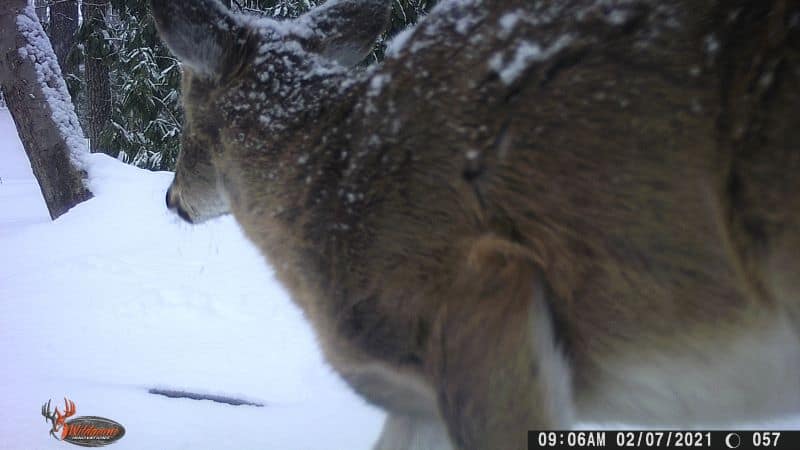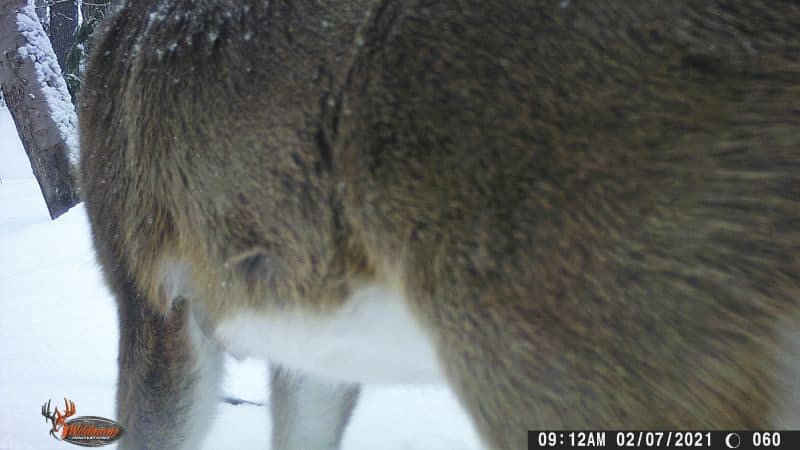Mariton: Simple yet complex
by Tim Burris, Preserve Manager

Notice all the shades of brown, gray and even black.
People (including me) often talk about a white-tailed deer’s “gray winter coat” and “red summer coat”. That is the simplistic description, and from a distance the coat seems one colored. Over the winter, the trail camera photographed a deer that revealed the complexity of the coloring. This deer was so close that the camera couldn’t completely focus, but the hairs are fanned in such a way that you can see the multitude of shades that aid in completely camouflaging a deer in the forest.

I had several deer completely disappear before my eyes this past winter while I was sitting in a tree stand. So, I’m fascinated by a deer’s camouflage. One time I watched four deer walking through the forest. There were no leaves on the trees or bushes. They stopped in some spicebush about 30 yards away and completely melted into the fabric of the forest. I was elevated which gave me a better vantage, and the spicebush wasn’t particularly thick. Human eyes are great at finding detail, but I watched them stop and I could no longer see them. With binoculars I was eventually able to find a leg or ear, and piece together a deer. But as soon as I started looking for one of the others, I would “lose” the one I had just found.
If you listen to dedicated hunters, you will hear their deep appreciation for a deer’s camouflage even as they voice frustration. A deer’s pelage is sublimely nuanced. Even looking at the photos, it seems simple. You realize just how well the deer’s hair blends with its background when one disappears before your eyes.
